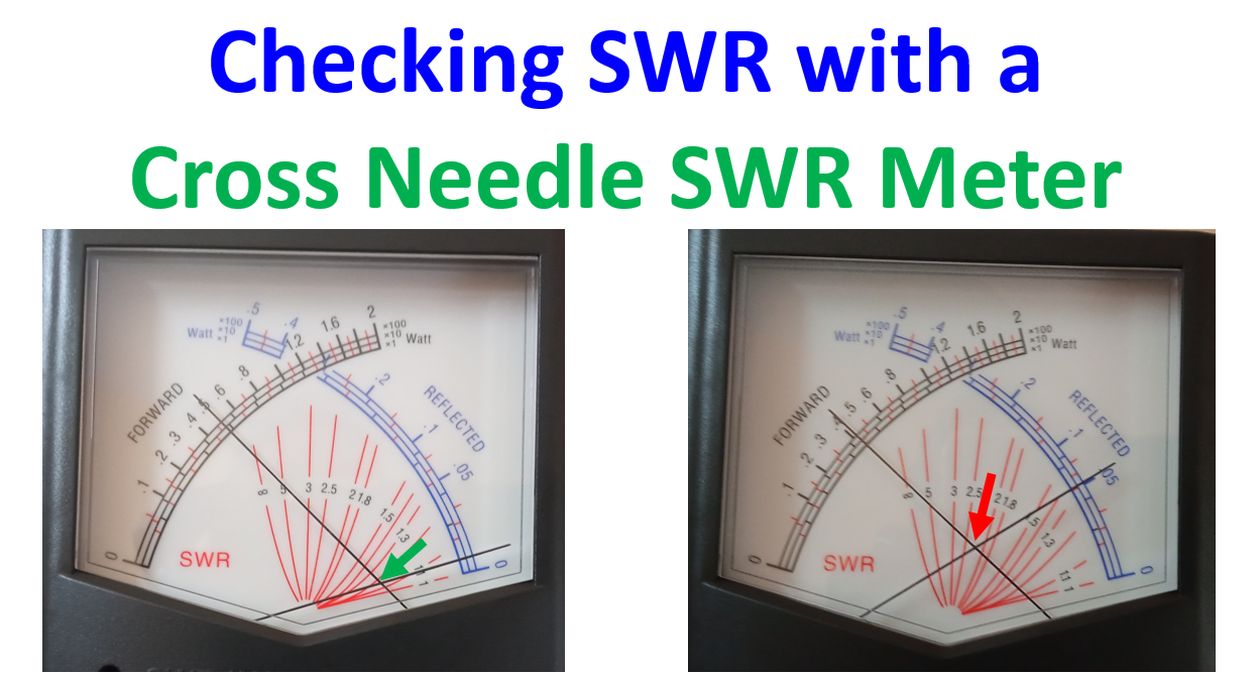Checking SWR with a Cross Needle SWR Meter
Checking SWR with a Cross Needle SWR Meter
Checking SWR using a patch cable to connect the SWR meter between the radio and the antenna was discussed earlier. Most of the modern SWR meters are cross needle SWR meters which will show both forward and reflected power with two movements simultaneously along with SWR on another scale. In the SWR meter illustrated here forward power is indicated by the black scale and reflected power by the blue scale. Multiplier for the power can be x1, x10 or x100 depending on the position of the selector which is not shown here. SWR is indicated by the crossing point of the two movements by the red scale.

Green arrow in the first picture indicates an SWR of about 1.2:1 which is quite acceptable. Output forward power is seen as 0.5, which is actually 5 Watts as the selector was at x10. Reflected power is quite low, with the needle near zero, much below 0.05 Watts. This indicates a matched antenna and feedline with the radio. Red arrow in the second picture indicates an SWR above 2:1, but below 2.5:1. The forward power is lower, just above 4 Watts. Reflected power is much higher than the previous, at over 0.05 Watts.
This indicates a mismatch, possibly because the antenna is not tuned to the operating frequency. Modern radios start cutting down the output power when the SWR goes above 2:1, as a protective mechanism to prevent overheating and damage to the final RF power amplifier. High SWR can also cause heating and damage to the feedline. When high SWR is noted, either the antenna has to be retuned for the operating frequency as by adjusting a gamma match or by using an antenna tuner.